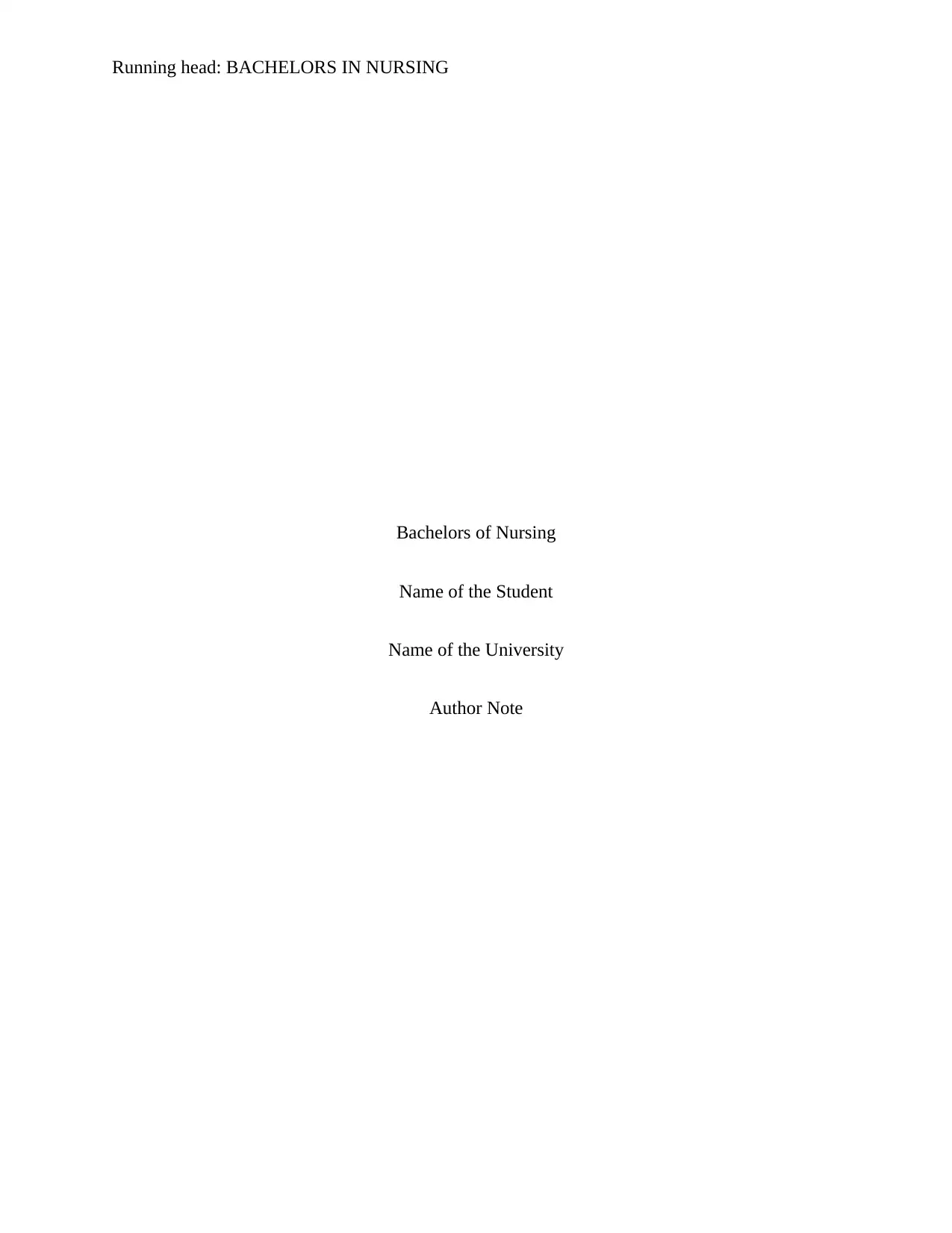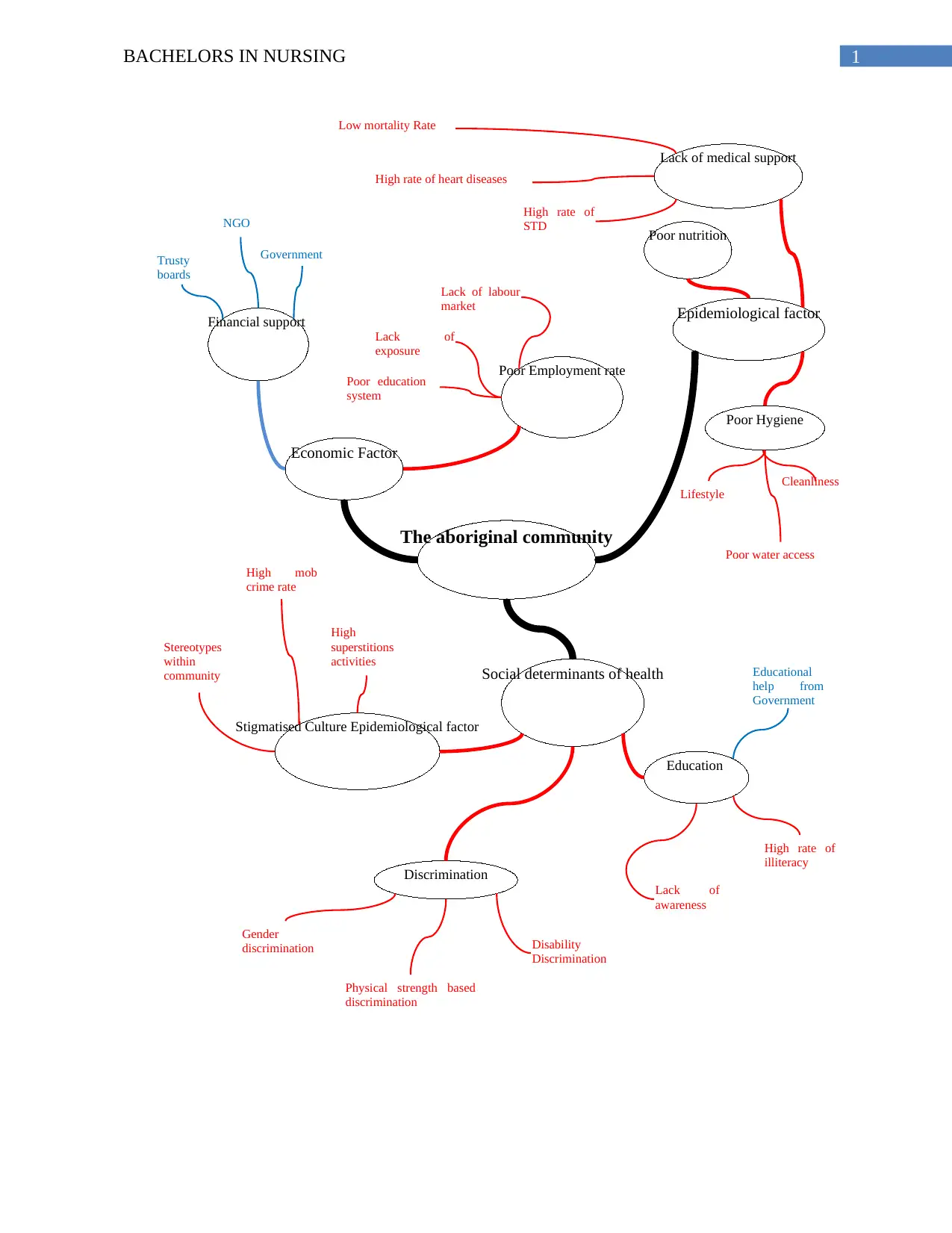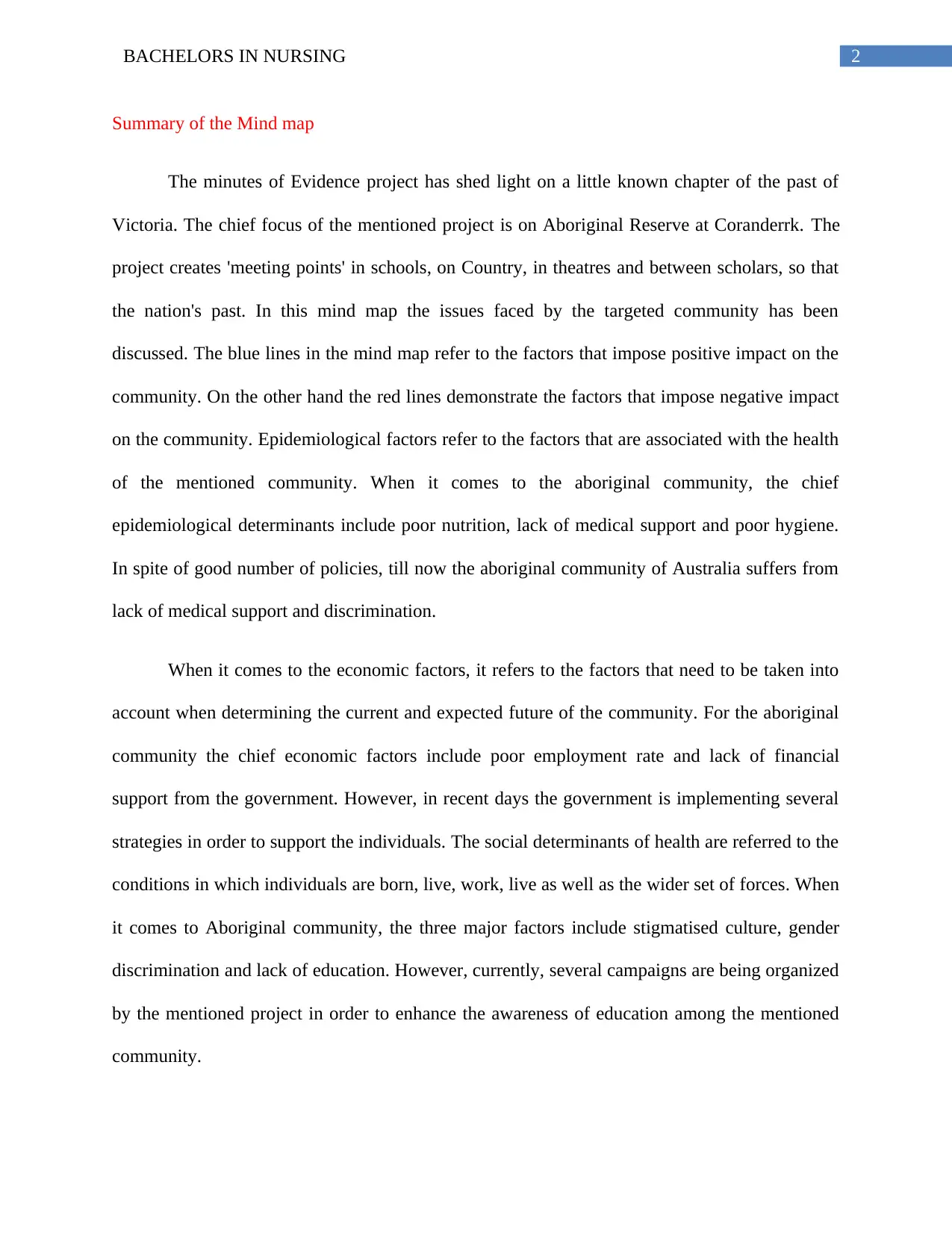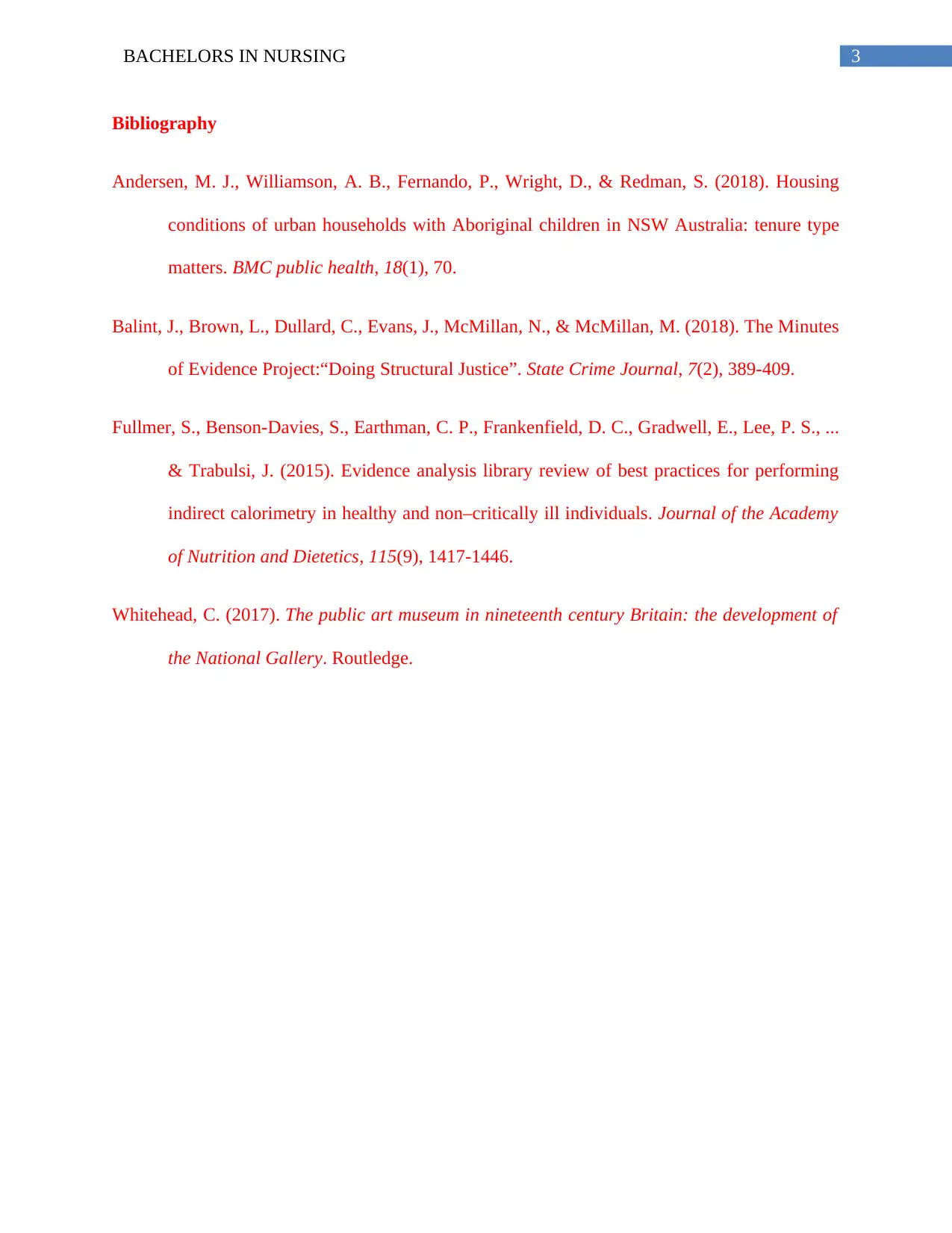Bachelors of Nursing: Aboriginal Community Health Determinants
VerifiedAdded on 2023/01/16
|4
|651
|77
Report
AI Summary
This report, crafted for a Bachelors of Nursing program, delves into the health of the Aboriginal community, examining various determinants influencing their well-being. The report begins with a mind map that visually represents key issues, including poor nutrition, lack of medical support, and the impact of economic factors like low employment rates. It also explores social determinants such as stigmatization and gender discrimination. The analysis highlights the role of epidemiological factors and the impact of government policies. The report emphasizes the need for increased awareness and support for the community's health, referencing specific projects aimed at improving education and addressing health disparities. The report concludes with a bibliography of relevant sources to support the findings and recommendations presented in the analysis.
1 out of 4











![[object Object]](/_next/static/media/star-bottom.7253800d.svg)